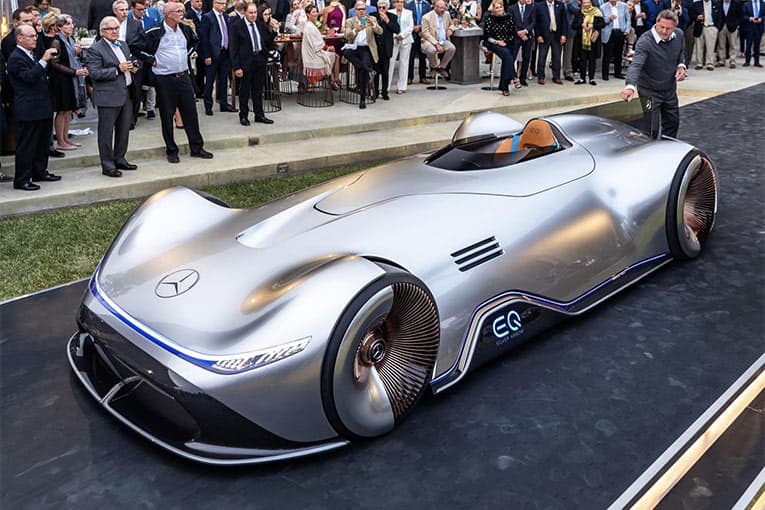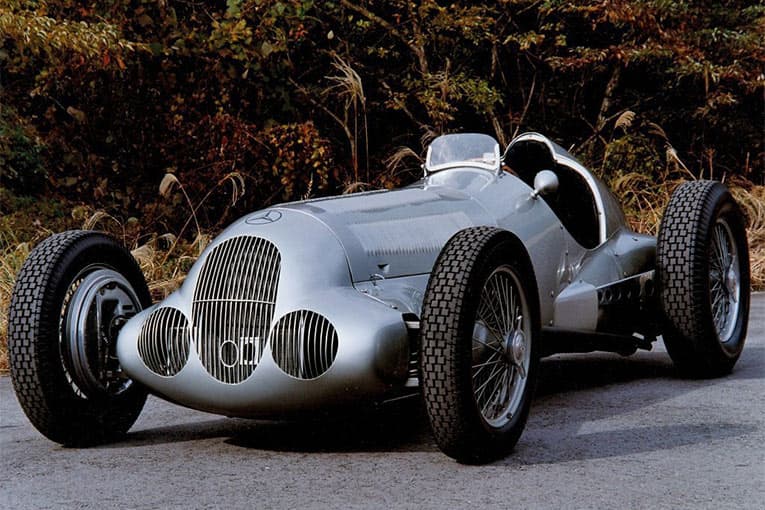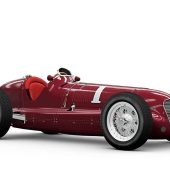After the successful W 25 Grand Prix racing car, Mercedes-Benz developed a new car for the 1937 season. The new W 125 racing car had an extremely sturdy, tubular oval frame made from special steel, with four cross members. It benefited from tests with production car frames as, for instance, the one used on the 1938 generation of the Mercedes-Benz 230. The wheels were located differently, by double wishbones and coil springs at the front, as on the celebrated, noble 500 K and 540 K models, and by a double-joint De Dion rear axle which ensured constant camber, plus longitudinally installed torsion bar springs and lever-type shock absorbers. Lateral links transferred thrust and brake moments to the chassis.
After extensive tests on the Nürburgring, the engineer Rudolf Uhlenhaut came up with a revolutionary suspension configuration: setting a precedent for later Grand Prix car designers, Uhlenhaut just reversed the basic suspension set-up used until then, stiff springing but little damping: the W 125 had soft springs with long spring travel and stiff dampers and thus served as a role model for all modern Mercedes-Benz sports cars. Its outer appearance resembled its predecessor’s, unmistakable all the same by the three cooling air inlets. For the ultra-fast Avus race on 30 May 1937 (Hermann Lang achieved an average speed of 261.7 km/h), it was kitted out with a streamlined body. The transmission and differential formed an integrated unit. The car’s eight-cylinder in-line engine represented the highest evolutionary stage of the Grand Prix machine used since 1934. The supercharger was positioned behind the carburettors and thus supplied with the mixture itself – a first with Mercedes-Benz racing cars.

Although the W 125 served its fast purpose for one year only, it did so with great variability. It could precisely be adjusted to the respective racetrack by means of different transmissions, tank volumes and petrol cocktails, carburettors, superchargers, rim and tire sizes, tire treads and even exterior dimensions. Engine power, torque, top speed and the speeds achieved in the individual gears varied accordingly. As many as eight different transmission ratios were available, for instance, plus two rear-wheel sizes (7.00-19 and 7.00-22). An output of 592 hp (435 kW) at 5800 rpm quoted by the factory refers to the Gran Premio d’Italia in Livorno on 12 September 1937. The engine, which had arrived at a capacity of 5660cc in the meantime, devoured one litre per kilometre, an aggressive special mixture made up of 88 percent methanol, 8.8 percent acetone and traces of other substances.
Ready to race, the W 125 weighed 1097 kilograms (1021 kilograms without driver) in that configuration, including 240 litres of petrol, seven litres of water, nine litres of engine oil and 3.5 litres of transmission oil. The Untertürkheim engineers evoked up to 646 hp (475 kW) from the 222-kilogram engine on the test bench, corresponding to a massive power-to-swept-volume ratio of 114 hp (84 kW) and an equally astounding power-to-weight ratio of 1.16 kilograms per horsepower.

Specifications W 125
Engine
- Supercharged
- Eight-cylinder
- 5660 cc
Power
- 592 hp (435 kW)
- Later boosted to up to 646 hp (475 kW)
Top speed
- Over 300 km/h








